Visits: 0
This is a reprint from Nice News.
|
|
||||||||||||||||||||||||||||||||||||||||||||||||||||||||||||||||||||||||||||||||||||||||||||||||
|
||||||||||||||||||||||||||||||||||||||||||||||||||||||||||||||||||||||||||||||||||||||||||||||||
|
|
|
|
|
|
|
![]()

Visits: 0
This is a reprint from Nice News.
|
|
||||||||||||||||||||||||||||||||||||||||||||||||||||||||||||||||||||||||||||||||||||||||||||||||
|
||||||||||||||||||||||||||||||||||||||||||||||||||||||||||||||||||||||||||||||||||||||||||||||||
|
|
|
|
|
|
|
![]()
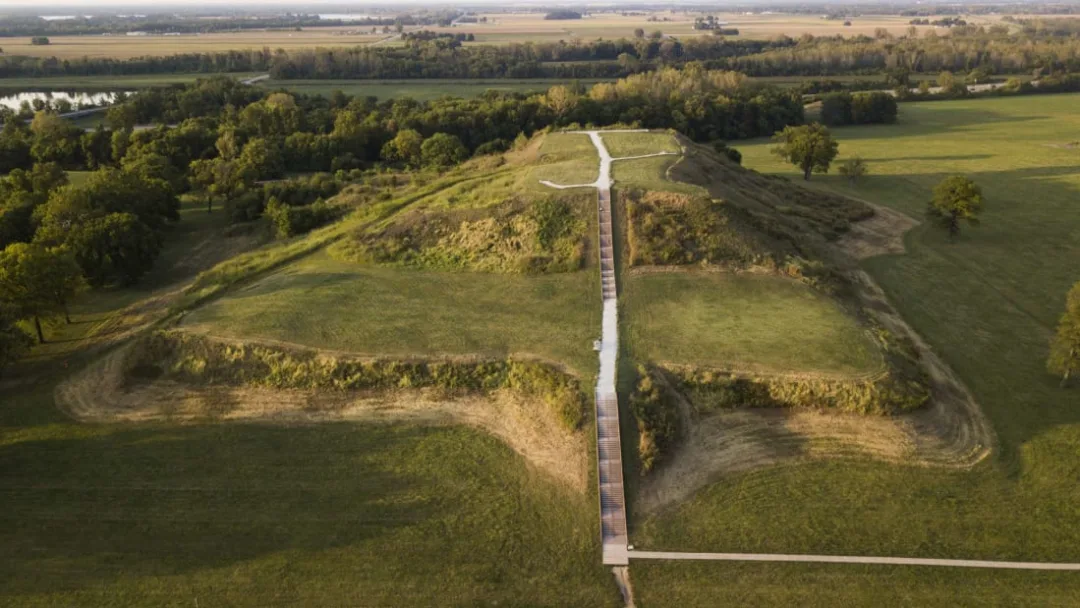
Visits: 3
This article was originally found on Mental Floss.
Before Spanish colonizers arrived in the Mississippi River valley in the 16th century, Native peoples built huge cities, developed extensive river-based trade routes, and constructed extraordinary earthworks. These mounds take different forms—low and round, tall and conical, broad and flat-topped, even animal-shaped—and served as important ceremonial and burial sites for hundreds of years or more. Here are 11 ancient Native American earthworks that offer a glimpse into prehistory.
Just outside modern-day St. Louis, Missouri, lie the remains of the largest pre-European contact city. The Mississippian people—a Native American culture defined by agriculture, complex social hierarchy, and mound building—constructed 120 large earthen mounds near the Mississippi River between 800 and 1400 CE. At its peak in the 12th century CE, Cahokia may have been home to 20,000 inhabitants, roughly the same population as London at the time. The cause of its demise is currently a matter of debate. In 1967, archaeologists discovered several mass graves containing 270 bodies within Mound 72. Today, more than 70 mounds are still visible, including 100-foot tall Monks Mound, the largest earthwork in North America.
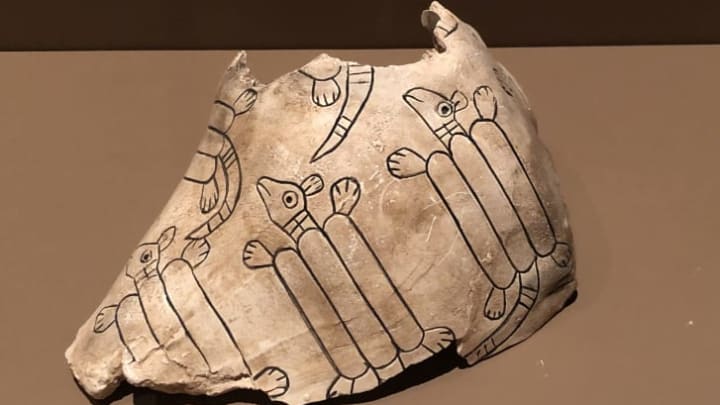
The Caddoan-speaking inhabitants of this Mississippian mound city along the Arkansas River built a thriving trade network from the Rocky Mountains to the Gulf Coast between 850 and 1450 CE. The culture’s most valued objects, conch shells, were imported from the Caribbean—the community even had an agent stationed in southern Florida to direct the shipments. The Craig Mound, a burial mound 350 feet long, 11 feet wide, and 34 feet tall, once held the remains of more than 1000 leaders, covered in earth and grave goods. The abundance of stone, copper, shell, and textile artifacts—looted before Oklahoma protected the mounds by law—prompted the Kansas City Star to call the burial mound the “King Tut of the Arkansas Valley.”
There are no burials in the impressive Serpent Mound, located about 70 miles east of Cincinnati, Ohio. The 1348-foot-long earthwork, built on an ancient asteroid impact crater, is an effigy mound (a mound in the shape of an animal), and contained no artifacts to indicate when and by whom it was created. Some archaeologists believed the Serpent Mound was made by people of the Adena Culture, sometime between 800 BCE and 100 CE, because two Adena burial mounds are nearby. In 1991, an excavation of the Serpent Mound turned up charcoal bits that dated to a period between 1025 and 1215 CE, suggesting it was built by the Fort Ancient Culture, which lived in present-day Ohio between 1000 and 1650 CE.
This mound complex in southwest Georgia is the region’s largest site built by people of the Woodland Period, an archaeological era lasting from 1000 BCE to 900 CE. At the height of its development, between 350 and 600 AD, the Kolomoki settlement was likely centered around eight earthen mounds, seven of which survive today and include a 57-foot-tall platform mound believed to have been used for ceremonies. Two of the mounds served as burial sites and contained large caches of animal-shaped pottery, while other excavations yielded shells and items that indicated a well-oiled trade network. In 1974, burglars broke into the site’s museum and stole 129 priceless ceramic artifacts—most of which are still missing—in the state’s most infamous art theft.

Between 600 and 1250 CE, in the Late Woodland Period, a culture known as the Effigy Moundbuilders constructed earthworks in the shapes of deer, bison, bear, and other wildlife in the upper Mississippi River valley. Effigy Mounds National Monument, along the Mississippi River south of the Iowa-Minnesota border, encompasses more than 200 effigy mounds, conical burial mounds, and rectangular platform mounds. Descendants of the builders, who belong to 20 culturally associated Native American tribes, suggest the mounds serve ceremonial and sacred purposes.

A group of Mississippian Caddo people called the Hasinai settled this site, about 150 miles southeast of downtown Dallas, around 800 CE. The floodplain provided good soil for farming and the network of rivers allowed the Hasinai to obtain goods from far and wide, such as shells from present-day Florida and copper from the Great Lakes region. The site was largely abandoned in around 1300 CE, but three large mounds remain today at Caddo Mounds State Historic Site: the High Temple Mound, originally 35 feet high; the smaller Low Platform Mound; and the burial mound [PDF]. Excavation of the burial mound beginning in 1939 revealed about 90 bodies in 30 burial caches, along with sophisticated artifacts that hinted at the interred people’s high social status.
The most intact Mississippian Culture site in the Southeast, Etowah Mounds State Historic Site comprises six mounds, a village site, a central plaza, and other structures that demonstrate the complex society that lived there between 1000 and 1500 CE. Two impressive flat-topped mounds may have been the sites of the chiefs’ houses and temples. An excavated and reconstructed burial mound yielded remains of 350 people and archaeological clues about the culture’s customs and social hierarchy [PDF]. An onsite museum displays many of the grave goods, including two large marble effigies of a man and a woman that were likely used in ceremonies.
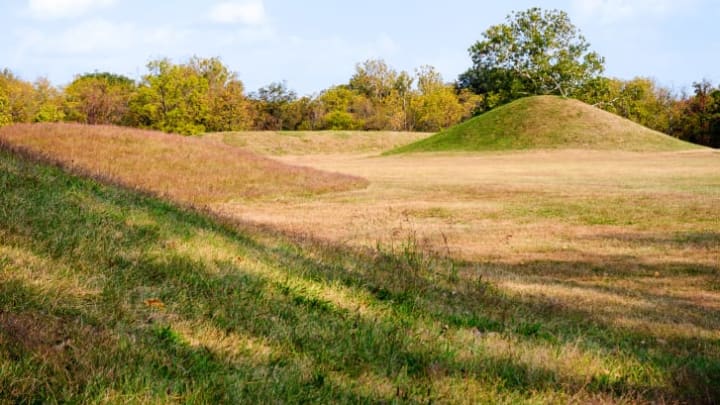
This collection of six major mound complexes outside modern-day Chillicothe, Ohio, illustrates the engineering prowess of the Hopewell Culture, which lived in the region as early as 100 BCE. The huge, geometrically shaped earthworks include square or circular enclosures around conical or rectangular mounds, all of which were used for ceremonial or mortuary purposes rather than as village sites. The Hopewell Mound Group, one of the park’s six areas, contains 29 cremation and burial mounds, such as one originally measuring 500 feet long and 33 feet tall. Like the later Woodland and Mississippian cultures, Hopewell people carried on trade with far-flung communities as evidenced by their finely wrought pottery, effigy pipes, and ornaments in silver, pearl, quartz, mica, obsidian, and other materials.
The Bynum Mounds, which originally numbered six, were built between 100 BCE and 100 CE by people of the Middle Woodland Period. They lie toward the southern end of the Natchez Trace, an ancient path stretching more than 400 miles from Natchez, Mississippi, to Nashville, Tennessee. In the 1940s, archaeologists discovered the grave of a woman, who had been buried with copper objects, in one of the mounds; another mound held the remains of several people along with greenstone ax-heads, copper spools, and projectile points (both of these mounds have been rebuilt). The Bynum Mounds are not far from another Middle Woodland Period complex along the Natchez Trace: the Pharr Mounds, dating to the 1st or 2nd century CE, and consisting of eight burial mounds. Four were excavated in the 1960s and found to contain human remains on low clay platforms, surrounded by grave goods.

Second in size only to Cahokia, the Moundville site in west-central Alabama spanned 300 acres on the Black Warrior River. Like other Mississippian Culture settlements, the residents of this city practiced agriculture, developed trading relationships with other river communities, and built mounds to serve as ceremonial spaces and mortuary sites. Moundville’s village, plaza, and 26 mounds were encircled by a wooden palisade. Historians aren’t sure why the settlement began to decline after 1350 CE, but almost all inhabitants had abandoned the city by 1500 CE. Moundville Archaeological Park is but one stop on the Alabama Indigenous Mound Trail, an itinerary of 13 sites across the state that preserve and interpret pre-contact culture.
Designated a UNESCO World Heritage Site in 2014, Poverty Point in the northeastern corner of Louisiana preserves an array of incredibly old earthworks. Between 1700 and 1100 BCE, workers built a complex of six enormous, concentric, C-shaped ridges about 5 feet tall, segmented by walkways, which may have been foundations for dwellings. Archaeologists estimate that workers had to carry about 53 million cubic feet of soil in hand-held baskets to construct the amphitheater-like ridges. Six large mounds and caches of beads, figurines, tools, and other objects made of stone from sources hundreds of miles away demonstrate the community’s sophistication. But it’s unclear who built the earthworks, or why they were made—to date, archaeologists have not uncovered any ancient burials at Poverty Point.
![]()
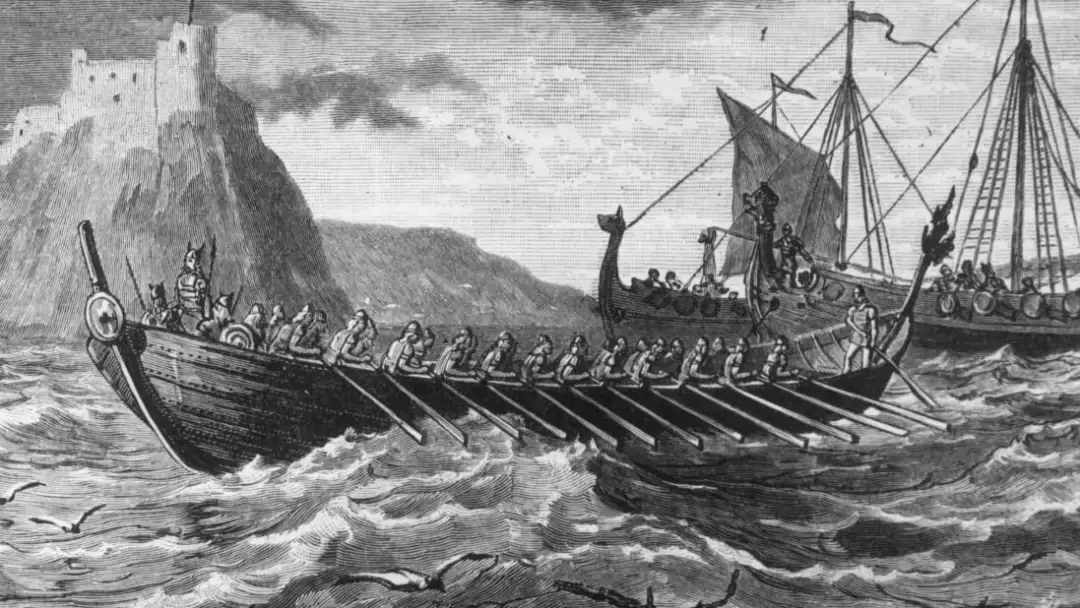
Visits: 4
Vikings are the focus of countless movies, TV shows, video games, sports teams, and comic books today—but that doesn’t mean we always get them right. From the myths surrounding their horned helmets to their not-so-fiery burial customs, here are some common misconceptions about Vikings, adapted from an episode of Misconceptions on YouTube.
In 1876, German theatergoers were abuzz about a hot new ticket in town. Titled Der Ring des Nibelungen, or The Ring of the Nibelung, Richard Wagner’s musical drama played out over an astounding 15 hours and portrayed Norse and German legends all vying for a magical ring that could grant them untold power. To make his characters look especially formidable, costume designer Carl Emil Doepler made sure they were wearing horned helmets.
Though the image of Vikings plundering and pillaging while wearing horned helmets has permeated popular fiction ever since, the historical record doesn’t quite line up with it. Viking helmets were typically made of iron or leather, and it’s possible some Vikings went without one altogether, since helmets were an expensive item at the time. In fact, archaeologists have uncovered only one authentic Viking helmet, and it was made of iron and sans horns, which some historians and battle experts believe would have had absolutely no combat benefit whatsoever.
So where did Doepler get the idea for horned helmets from? There were earlier illustrations of Vikings in helmets that were occasionally horned (but more often winged). There were also Norse and Germanic priests who wore horned helmets for ceremonial purposes. This was centuries before Vikings turned up, though. Some historians argue that there is some evidence of ritualistic horned helmets in the Viking Age, but if they existed, they would have been decorative horns that priests wore—not something intended for combat.
Composer Richard Wagner apparently wasn’t pleased with the wardrobe choices; he didn’t want his opera to be mired in cheap tropes or grandiose costumes. Wagner’s wife, Cosima, was also irritated, saying that Doepler’s wardrobe smacked of “provincial tastelessness.”
The look wound up taking hold when Der Ring des Nibelungen went on tour through Europe in the late 19th and early 20th centuries. Other artists were then inspired by the direction of the musical and began using horned Viking helmets in their own depictions, including in children’s books. Pretty soon, it was standard Viking dress code.

When tales of Viking action spread throughout Europe, they were sometimes accompanied by ferocious-sounding nicknames like Ásgeirr the Terror of the Norwegians and Hlif the Castrator of Horses. This may have been a handy way to refer to Vikings with reputations for being hardcore at a time when actual surnames were in short supply. If you wanted to separate yourself from others with the same name, you needed a nickname. But plenty of them also had less intimidating labels.
Take, for instance, Ǫlver the Friend of Children. Sweet, right? Actually, Ǫlver got his name because he refused to murder children. Then there was Hálfdan the Generous and the Stingy with Food, who was said to pay his men very generously, but apparently didn’t feed them, leading to this contradictory nickname. Ragnarr Hairy Breeches was said to have donned furry pants when he fought a dragon.
Other unfortunate-but-real Viking names include Ulf the Squint-Eyed, Eirik Ale-Lover, Eystein Foul-Fart, Skagi the Ruler of Shit, and Kolbeinn Butter Penis. While the historical record is vague on how these names came to be, the truth is never going to be as good as whatever it is you’re thinking right now.
When someone like Kolbeinn Butter Penis died, it would only be fitting that they were laid to rest with dignity. And if you know anything about Vikings from pop culture, you know that meant setting them on fire and pushing them out to sea.
But as cool as that visual may be, it’s not exactly accurate. Vikings had funerals similar to pretty much everyone else. When one of them died, they were often buried in the ground. Archaeologists in Norway uncovered one such burial site in 2019, where at least 20 burial mounds were discovered.
The lead archaeologist on the site, Raymond Sauvage of the Norwegian University of Science and Technology, told Atlas Obscura that:
“We have no evidence for waterborne Viking funeral pyres in Scandinavia. I honestly do not know where this conception derives from, and it should be regarded as a modern myth. Normal burial practice was that people were buried on land, in burial mounds.”
The flaming ship myth may have come from a combination of two real Viking death practices. Vikings did sometimes entomb their dead in their ships, although the vessels remained on land where they were buried. And they did sometimes have funeral pyres. At some point in the historical record, someone may have combined these two scenarios and imagined that Vikings set ships ablaze before sending them out to sea with their dead still on board.
While it’s true Vikings were violent, they weren’t necessarily the most experienced or talented warriors of their day. In fact, they were mostly normal people who decided plundering would be a great side hustle in the gig economy of Europe.
Historians believe Vikings were made up mostly of farmers, fishermen, and even peasants, rather than burly Conan the Barbarian types. Considering that the coastal villages they attacked probably didn’t put up much resistance, one could be a Viking and not even have to fight all that much. This leads to another common misconception—that Vikings were always swinging swords around. Like helmets, swords were expensive. A day of fighting was more likely to include spears, axes, long knives, or a bow and arrow.
You can blame this fierce warrior rep on the one squad of Vikings that actually fit the bill. Known as berserkers, these particular Vikings worshipped Odin, the god of war and death, and took Odin’s interests to heart. Some berserkers were said to have fought so fiercely that it was as though they had entered a kind of trance. If they were waiting around too long for a fight to start, it was said they might start killing each other.
Most depictions of Vikings would have you believe that they were constantly caked in mud, blood, and other miscellaneous funk. Don’t fall for it. Archaeologists have unearthed a significant amount of personal grooming products over the years that belonged to Vikings, including tweezers, combs, toothpicks, and ear cleaners.
Vikings were also known to have bathed at least once a week, which was a staggeringly hygienic schedule for 11th-century Europe. In fact, Vikings put so much attention on bathing that Saturday was devoted to it. They called it Laugardagur, or bathing day. They even had soap made from animal fat.
Hygiene was only one aspect of their routine. Vikings put time and effort into styling their hair and sometimes even dyed it using lye. Their beards were neatly trimmed, and they were also known to wear eyeliner. All of this preening was said to make Vikings a rather attractive prospect to women in villages they raided, as other men of the era were somewhat reluctant to bathe.

Considering the times, Vikings actually had a fairly progressive approach to gender roles. Women could own property, challenge any kind of marriage arrangement, and even request a divorce if things weren’t working out at home. To do so, at least as one story tells it, they’d have to ask witnesses to come over, stand near her bed, and watch as she declared a separation.
In addition to having a relatively high degree of independence, Viking women were also known to pick up a weapon and bash some heads on occasion. The historical record of a battle in 971 CE says that women had fought and died alongside the men. A woman who donned armor was known as a “shieldmaiden.” According to legend, over 300 shieldmaidens fought in the Battle of Brávellir in the 8th century and successfully kept their enemies at bay.
According to History, one of the most notable shieldmaidens was a warrior named Lathgertha who so impressed a famous Viking named Ragnar Lothbrok—he of the Hairy Breeches—that he became smitten and asked for her hand in marriage.
![]()
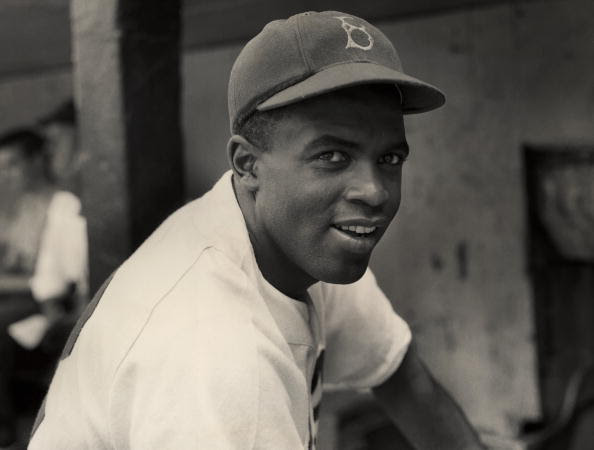
Visits: 0
Please no political comments.
|
|
|||||||||||||
|
|||||||||||||
|
| Hulton Archive / Archive Photos via Getty Images | ||||||
|
||||||
Museum Celebrating Jackie Robinson’s Life and Legacy Opens in New York |
||||||
| After more than 14 years of planning, a museum commemorating baseball legend Jackie Robinson has opened in New York City. A large crowd of athletes, sports fans, and politicians came out for the grand opening earlier this week, but the most notable among them was the star player’s 100-year-old widow, Rachel. She participated in the festivities along with the couple’s children, David and Sharon, to honor Robinson, who was the first Black man to play in Major League Baseball in the modern era.
The museum contains 40,000 historical images, over 4,500 artifacts saved by Robinson’s friends and family, and more than 450 hours of video footage highlighting his baseball career and dedication to civil rights. Jackie Robinson Foundation President Della Britton said Rachel “wanted a fixed tribute to her husband, where people could come and learn about him, but also be inspired.” David, now 70, believes his father would have been proud. He said: “I think today Jackie Robinson would say I accept this honor, but I accept this honor on behalf of something far beyond my individual self, far beyond my family, far beyond even my race.” |
||||||
|
||||||

|
|
||||||
Nonprofit “I Want To Mow Your Lawn” Does Yard Work for Those Who Can’t |
||||||
| A maintained lawn is not only visually appealing, but it also has many environmental benefits, such as reducing high temperatures, improving flood control, and preventing erosion. For those who are unable to do the often laborious task themselves, the nonprofit I Want To Mow Your Lawn is here to help. The national organization connects background-screened landscaping volunteers with seniors, military veterans, and people with disabilities to provide free lawn care. “Whether it’s one time a year or one time a week, it makes a difference,” founder Brian Schwartz told WDTN.
Schwartz started I Want To Mow Your Lawn, which is fully funded by donations, shortly after losing his job when the pandemic started. “It was just a stressful time and I just went out to mow my own lawn and then decided to help neighbors just to keep myself busy while helping others,” he recalled. Since its establishment in 2020, the grassroots movement has adopted “green” alternative lawn care practices and offers eco-friendly equipment upgrades to volunteers. With over 230 volunteers spanning 39 states, Schwartz has plans to further expand the organization’s footprint and continue mowing lawns for those in need. |
||||||
|
||||||
 |
|
||||||||||||||||||||||||||||||||||||
|
||||||||||||||||||||||||||||||||||||
|
||||||||||||||||||||||||||||||||||||
|
||||||||||||||||||||||||||||||||||||
|
||||||||||||||||||||||||||||||||||||
![]()

Visits: 1
You can find this on The Discoverer.
|
 |
![]()

Visits: 16
You can find this at Nice News.
|
|||||||||||||
|
|||||||||||||
|
| Mike Marsland / WireImage via Getty Images | |||||||||||||||||||||||||||||||||||||
|
|||||||||||||||||||||||||||||||||||||
Buzz Aldrin Auctions Off Space Memorabilia, Including His Moon Landing Jacket |
|||||||||||||||||||||||||||||||||||||
| Almost exactly 53 years after Buzz Aldrin became the second person to ever set foot on the moon, some of the memorabilia from his famed trip is up for the taking. The 92-year-old is auctioning off the jacket he wore during the moon landing as well as a series of other personal items and artifacts from his long career as an astronaut. Sotheby’s, which will host the auction on July 26, called Aldrin’s items “the most important Space Exploration collection to come to market.”
The jacket is estimated to sell for up to $2 million, as is a circuit breaker switch that broke during the moon mission. The switch is being sold alongside the pen that Aldrin used in its place to ignite the engine and get him and fellow explorer Neil Armstrong home safe. “After deep consideration, the time felt right to share these items with the world, which for many are symbols of a historical moment, but for me have always remained personal mementos of a life dedicated to science and exploration,” Aldrin said in a statement, per CNN. “I hope that this collection offers some insight into what it has been like to be Buzz Aldrin.” |
|||||||||||||||||||||||||||||||||||||
|
|||||||||||||||||||||||||||||||||||||
 |
|||||||||||||||||||||||||||||||||||||
| Willyam Bradberry / Shutterstock | |||||||||||||||||||||||||||||||||||||
|
|||||||||||||||||||||||||||||||||||||
How Sea Turtles Are Helping Researchers Predict Tropical Cyclones |
|||||||||||||||||||||||||||||||||||||
| Dozens of cyclones form each year over the world’s tropical oceans, and according to NASA, such storms pose “one of the biggest threats to life and property.” Unfortunately, they are also hard to predict, especially in the cyclone-prone Indian Ocean, which is why researcher Olivier Bousquet has put sea turtles to work. Bousquet started STORM (Sea Turtles for Ocean Research and Monitoring) with 15 turtles in 2019, and the program has taken off, leading to a wealth of data that will help predict future cyclones.
In the past, scientists have tagged other marine creatures, like seals, to collect data in hard-to-reach ocean ecosystems. After testing out a series of animals, Bousquet landed on sea turtles for several reasons. The turtles are heavy enough to carry the satellite sensors, and they tend to dwell in the area of the ocean — about 25 to 200 meters deep — where the energy for cyclones comes from. This year, STORM released 80 tagged turtles, and Bousquet plans to keep going. He told Hakai Magazine that with “a little bit of luck,” they will be able to time the turtles’ release to retrieve data from the heart of a cyclone. And fear not: the sturdy animals are well-equipped to survive the storms. |
|||||||||||||||||||||||||||||||||||||
|
|||||||||||||||||||||||||||||||||||||
 |
|||||||||||||||||||||||||||||||||||||
|
|||||||||||||||||||||||||||||||||||||
|
|
|||||||||||||||||||||||||||||||||||||
|
|||||||||||||||||||||||||||||||||||||
|
|
|||||||||||||||||||||||||||||||||||||
|
|||||||||||||||||||||||||||||||||||||
|
|
|||||||||||||||||||||||||||||||||||||
|
|||||||||||||||||||||||||||||||||||||
|
|
|||||||||||||||||||||||||||||||||||||
|
|||||||||||||||||||||||||||||||||||||
|
|
|||||||||||||||||||||||||||||||||||||
|
|||||||||||||||||||||||||||||||||||||
![]()
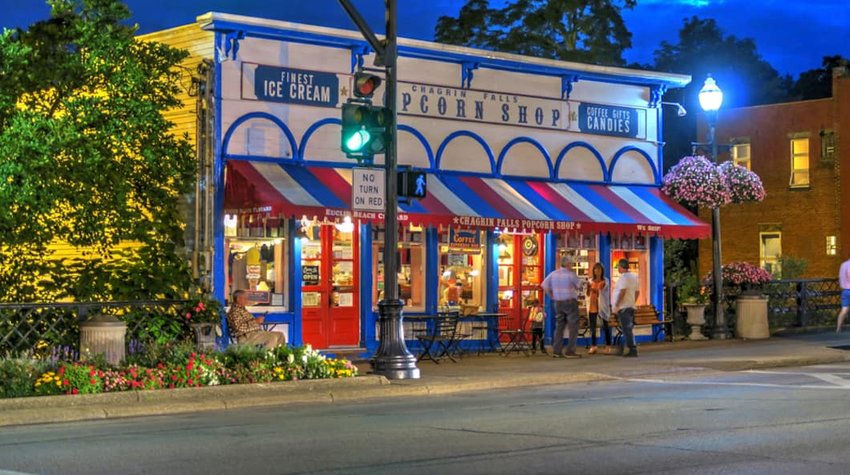
Visits: 4
This article first appeared on The Discoverer Blog.
We’re used to seeing movie stars and reading about science fiction characters who travel back through time to bygone eras, but you don’t need futuristic technology to experience something similar. The U.S. is full of towns that have stayed true to their customs and lifestyles as the years have gone by. So next time you have the urge to escape the fast-paced city life, consider these wonderful towns scattered across the country.

Cape May is a traditional seaside town set at the southern tip of New Jersey. It’s famous for its collection of over 600 well-preserved Victorian buildings, which give it a strong late 19th-century charm. A stroll along Washington Street Mall, where colorful brick and wooden landmarks house boutiques and ice cream parlors, is a must.

Antique dealers, independent fashion boutiques, local bookstores, and vintage sweet shops give this Ohio village an old-fashioned feel. When walking along Main Street you can easily imagine the entire community coming out to celebrate annual cultural events, like art and film festivals. Chagrin Falls straddles a namesake waterfall and the Chagrin River, making it one of the prettiest places here.
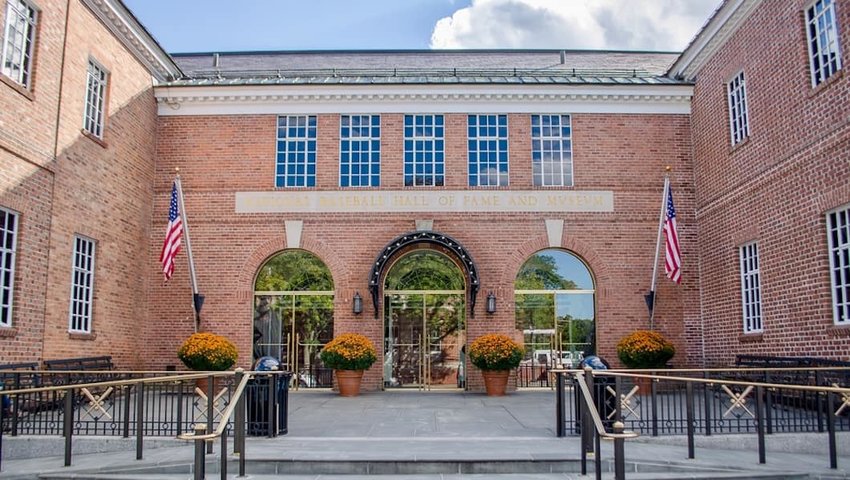
Life moves at its own laid-back pace in upstate New York, an ethos epitomized by the 2,000 residents of lakeside Cooperstown. Revered as the setting for the works of novelist James Fenimore Cooper, whose father incidentally founded the town, Cooperstown has multiple claims to fame. It’s also home to The National Baseball Hall of Fame Museum and Doubleday Field baseball park, which maintains the same atmosphere as it has since baseball’s golden age. There are superb brewpubs, cafes, and delis to retreat to after soaking up everything else the town has to offer.

The Amish are the masters of clinging to their roots and there are more than 50 thriving Amish communities spread throughout Pennsylvania, but Lancaster County is home to the country’s oldest and largest of them all. Expect to see horse-drawn carriages roll past lush green pastures dotted with windmills, and for more ideas, visit Discover Lancaster.

While cruising across Lake Huron to Mackinac Island, you’ll appreciate why everyone breathes a heavy sigh of relief when they arrive here. From the clapboard buildings to the vintage storefronts and pristine lawns, everything is picture-perfect. Cars are banned in this island village, so you’ll be getting around by foot, bike, or even horseback. Should the smell of fudge shops, serenity of wooded trails, and sound of crickets at night and birdsong in the morning excite you, then plan a visit.
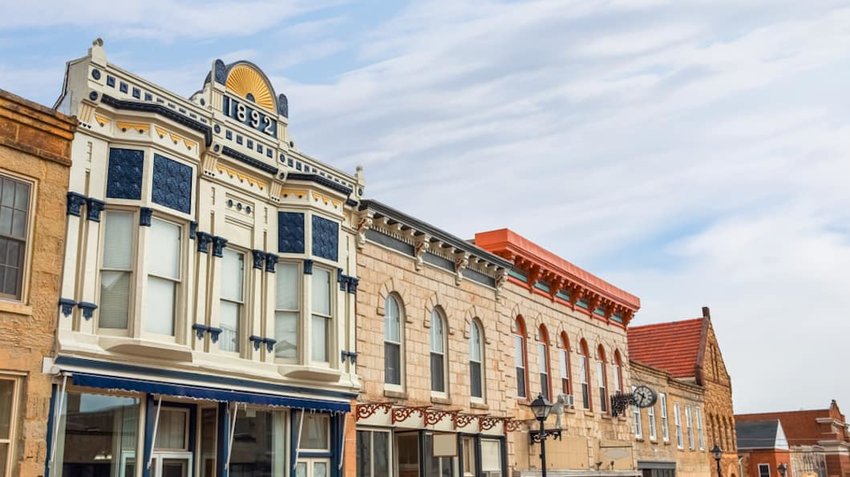
Miners flocked to Mineral Point from Cornwall, England, in the 1840s in search of lead. They built homes, such as Pendarvis House, that today wouldn’t look out of place in a remote Cornish village. The town center’s architectural landscape resembles part Cornish town, part Gold Rush settlement. You can feast on hearty Cornish pasties and figgyhobbin at cafes and try Celtic crafts at the fall Cornish Fest.

This city surrounded by the sprawling vineyards of the Sonoma Valley was the first in the U.S. to receive the Cittaslow Slow City status. Tree-lined Sonoma Plaza is a colonial masterpiece and hosts the delightful Sonoma Plaza Market every Tuesday evening. If you love shopping for locally-sourced and organic goods then this is the place to be. Meanwhile, frontier-style buildings double up as cafes, gourmet restaurants, and saloons. And way from the plaza, you can sip wine at over 100 different bodegas all within five minutes.
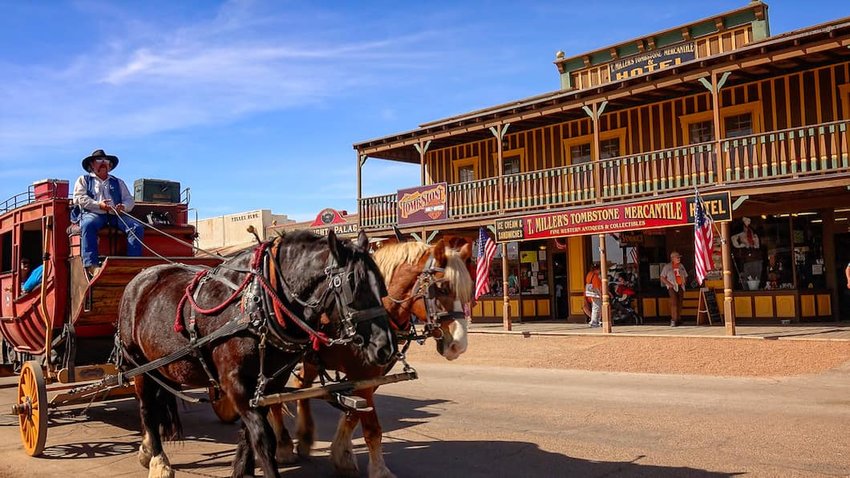
Live out all of your Wild West dreams in Tombstone, Arizona, the location of the infamous Gunfight at the O.K. Corral. Cowboys, cowgirls, and wannabes fill up the town’s saloons and the O.K. Corral museum puts on reenactments of Wyatt Earp’s 1881 shootout. The buildings are so well maintained that at times it’s easy to think you’ve landed on a John Wayne movie set.

When in Williamsburg, head to the Colonial Williamsburg Historic Area to be transported to an American Revolution-era town. You’ll encounter men dressed in red coats carrying muskets and people trotting past elegant brick buildings via horse and carriage. You’ll see tradespeople carrying out apothecary, bindery, and blacksmithing tasks. You can even join in 18th-century games on a village green.

A group of around 100 families, who were avid supporters of Robert Owen’s utopian socialism movement, founded Yellow Springs in 1825. Their mission was to recreate the cooperative philosophy of New Harmony, Indiana. Although it didn’t quite come to fruition, the village still upholds a free-thinking, blissed out spirit. You’ll get the idea once you see the tie-dye dressed residents hopping between hippy-ish cafes and street fairs.
![]()
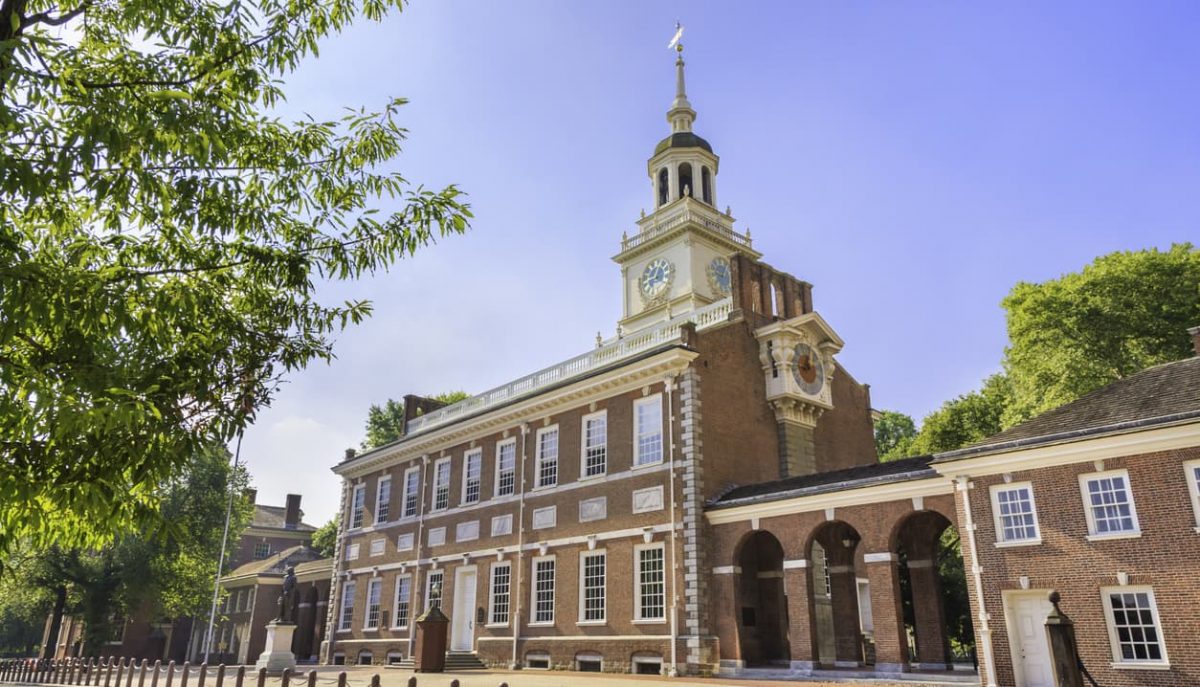
Visits: 58
Here are some of the most patriotic places in the “Land of the Free and the Home of the Brave.” Whether they directly served the nation’s Founding Fathers, or played another defining role in American history, these spots will have you singing the “Star Spangled Banner” in no time.

To kick things off we’re taking it back to the very brick and mortar building where America was born. Both the Declaration of Independence and US Constitution were penned and adopted at Independence Hall. Today a UNESCO Heritage Site, the building is a museum dedicated to the values the nation was founded on. Learn about the history of the colonies’ rebellion, and the first steps of constructing the nation. Peek at the Liberty Bell next door, or try reciting the Preamble from heart. Just don’t try stealing anything (looking at you Nick Cage).

One of the greatest tragedies in American history occurred in one of the most beautiful locations in the nation. Pearl Habor is home to a fantastic museum and monument to the soldiers who lost their lives in the December 7th attack. Exploring the USS Arizona memorial allows you to truly feel this dark moment in history, and the accompanying museum teaches you about the actions leading up to and resulting from this tragic day.

This 2.5-mile, red brick road links several notable buildings in Boston that played important roles in the nation’s history. From museums to churches, cemeteries and meeting halls, the path lets you walk in the footsteps of the Founding Fathers while appreciating Boston’s lively atmosphere firsthand. Spend the day exploring these historical sites, then go throw some tea in the harbor. #America.

Set along the coast of Baltimore, Maryland, Fort McHenry has been an important fortress since its construction in the 1700s. The fort’s design and architecture is worth a visit alone, but the entire place is imbued with history. Francis Scott Key, a Washington lawyer, penned the USA’s national anthem, The Star-Spangled Banner, from a cell in the fort during an attack in the War of 1812. You’ll never hear that song played over the speakers at a sporting event the same way after touring this historical site.

Kansas City might seem like an unlikely destination for a memorial to the First World War, but it’s one monument you have to see. The museum commemorates the United States’ role in the Great War, and memorializes the courage and sacrifice of all who served in that pivotal conflict.

“Remember the Alamo!” has been a rallying cry for Americans, particularly Texans, for decades. The former mission-turned-battle-site has long been a testament to the American spirit and perseverance. Visiting this landmark in San Antonio takes you back in time to the age of the Wild West, when the nation was young and cowboys prevalent.

As “America’s favorite pasttime”, you can’t help but feel a little patriotic every time you watch a baseball game. If you want to get a sense for the history of this iconic American sport, visit the National Baseball Hall of Fame. From legends like Babe Ruth and Jackie Robinson, to modern record breakers like Derek Jeter, the museum is a trip through American recreation.

America’s youngest national park, this monument in St. Louis represents much more than just a fancy archway. The Gateway Arch symbolizes America’s westward expansion, and has been in the background of many pivotal historical moments. One such moment was the fight for freedom in the monumental Dred Scott court case, which took place in the nearby courthouse. American freedom and ingenuity rings loudly in this national park.

Though not linked with any traditional patriotic events, the Grand Canyon is an iconic part of the American landscape. Standing before it can elicit many feelings, like humility and awe. It is intertwined with the USA, and making the trek to marvel at this natural wonder is a must for every red-blooded American.

One of the largest, and certainly the most well-known, military cemeteries in the United States, Arlington National Cemetery is a solemn yet beautiful testament to the men and women who fought for their country. With rows of white headstones, and the Tomb of the Unknowns, this cemetery is a sober reminder of the cost of building and protecting a nation.

The coordinated attacks on September 11, 2001 had a profound effect on, not only the United States, but the world as a whole. The tremendous loss of innocent life that resulted from these attacks is honored in the National September 11 Memorial & Museum. Visiting the area is an eye-opening experience, even for those who remember the tragedy of that morning.

This quintessential American road has been immortalized in books, movies, and television. Running through the American West, this road is dotted with historic towns, museums, and some gorgeous landscape. Every American should spend at least a few days driving the wide open country and exploring goodies along the way. Check out our guide on how to tackle this roadtrip like a pro!

We couldn’t pick just one spot in Washington D.C. to highlight. The entire city is a mecca of American patriotism. From buildings like the Capitol and the White House, to monuments like the Lincoln and Washington Monuments, to culturally-rich museums like the Smithsonian, the nation’s capitol is chock full of historically-relevant destinations. If you’re feeling the American pride, you’ll make this trek to D.C. at least one in your life to experience history for yourself.
![]()